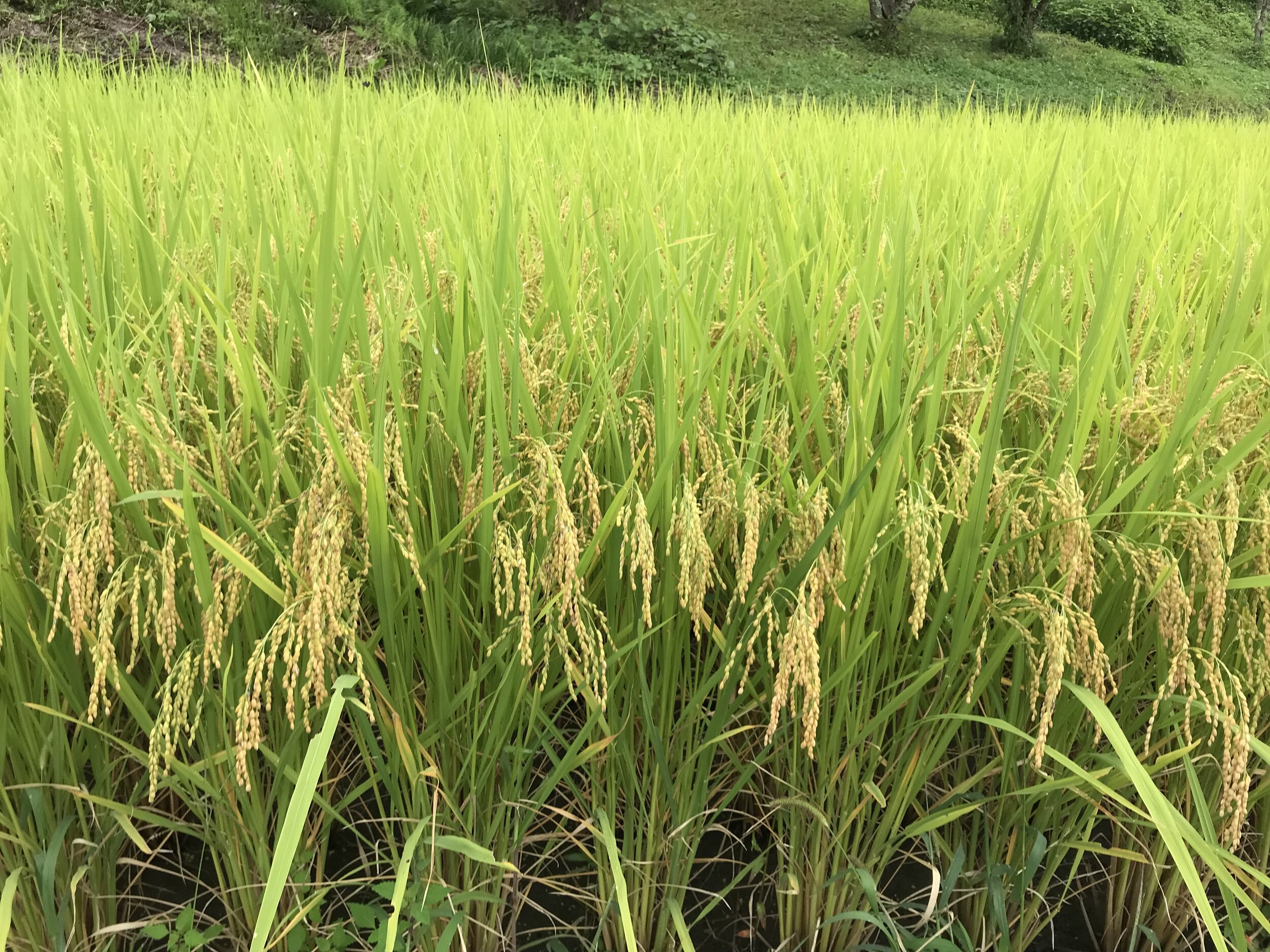Rice Season!
It is the rice harvesting season in Japan right now and the countryside is beautiful. The rice is always beautiful with the light green in summer that suddenly has heavy golden grains at the beginning of autumn.
Most rice is grown in relatively small plots of land and is either hand with a small sickle, or machine cut if the space permits. Before cutting the rice, the rice has field must be drained of water. Because of this the field is usually very muddy and boots must be worn. The rice is cut and traditionally bound with the stalk part of the rice. From there it is hung upside down for over a week to dry. Hanging rice in the sun makes it taste much better, but some people do not want to risk the rain so will use a machine.
After the rice is dried it is separated from the husks and weighed and bagged. From the rice is either polished locally or sent to a polishing plant. From there it is brought to the customer.
It is very important in Japan to have a deep respect for our rice. When we wash rice before boiling it, it is very important to never lose even one grain during the washing. When we eat rice, we must eat every last grain in our bowl. If you are at a restaurant and are not so hungry, please ask for a smaller portion of rice so that you are able to finish every last grain.
Other tips for eating Japanese rice:
It is bad etiquette is to stick your chopsticks in your rice. Many visitors feel that sticking chopsticks in the rice is an easy and obvious way to put them. However, in Japanese culture, sticking chopsticks vertically into rice should only be done only during funeral rituals, and therefore, something to be avoided during regular mealtimes.
Additionally, it is very bad manners to pass food between people from chopstick to chopstick. This is also only used in a funeral ritual where our loved ones small bones are picked up by two family members after cremation and placed in the urn. This should never be done at the table or anywhere other than during a funeral ritual.
During meals with people, if you have to pick up food from a communal plate, turn your chopsticks around and use the clean ends and place the food on your plate.
When eating rice, hold the rice bowl in one hand and the chopsticks in the other. Lift the bowl towards your mouth while eating. Additionally, it is poor manners to pour soy sauce over white cooked rice because you are implying that the rice is not good.
When eating sushi, lift the sushi up with your fingers or chopsticks, turn it over, and dip it into soy sauce fish-side first. That way the rice won’t start to break apart before it hits your mouth.
For the soy sauce, pour some soy sauce into the small dish provided. It is considered bad manners to waste soy sauce, so try not to pour more sauce than you will be using.
Other obvious eating etiquette:
Please do not play with your chopsticks, they are not drumsticks
Please do not cross your chopsticks over your bowl or plate in an X shape. Always keep your chopsticks straight and horizontally placed in front of you.
Please never point your chopsticks at anyone. Just like pointing at someone with your finger is considered rude, holding a pair of chopsticks and pointing them at someone is considered equally rude. Waving your chopsticks in the air and using them to point at someone or something are bad manners. Make sure you put your chopsticks down before you start chatting.
If you are eating with waribashi (disposable chopsticks) please don’t rub them together to remove splinters. Rubbing your chopsticks implies that you think the restaurant you’re dining at doesn’t provide quality chopsticks. If you are in a place that provides low quality chopsticks, you should probably have never gone there in the first place.
These are just tips that will show respect in Japanese restaurants and with friends. Smiling and bowing and staying cute are always good qualities!
Please visit Bows & Arrows for our selection of rice or visit us online Here!




